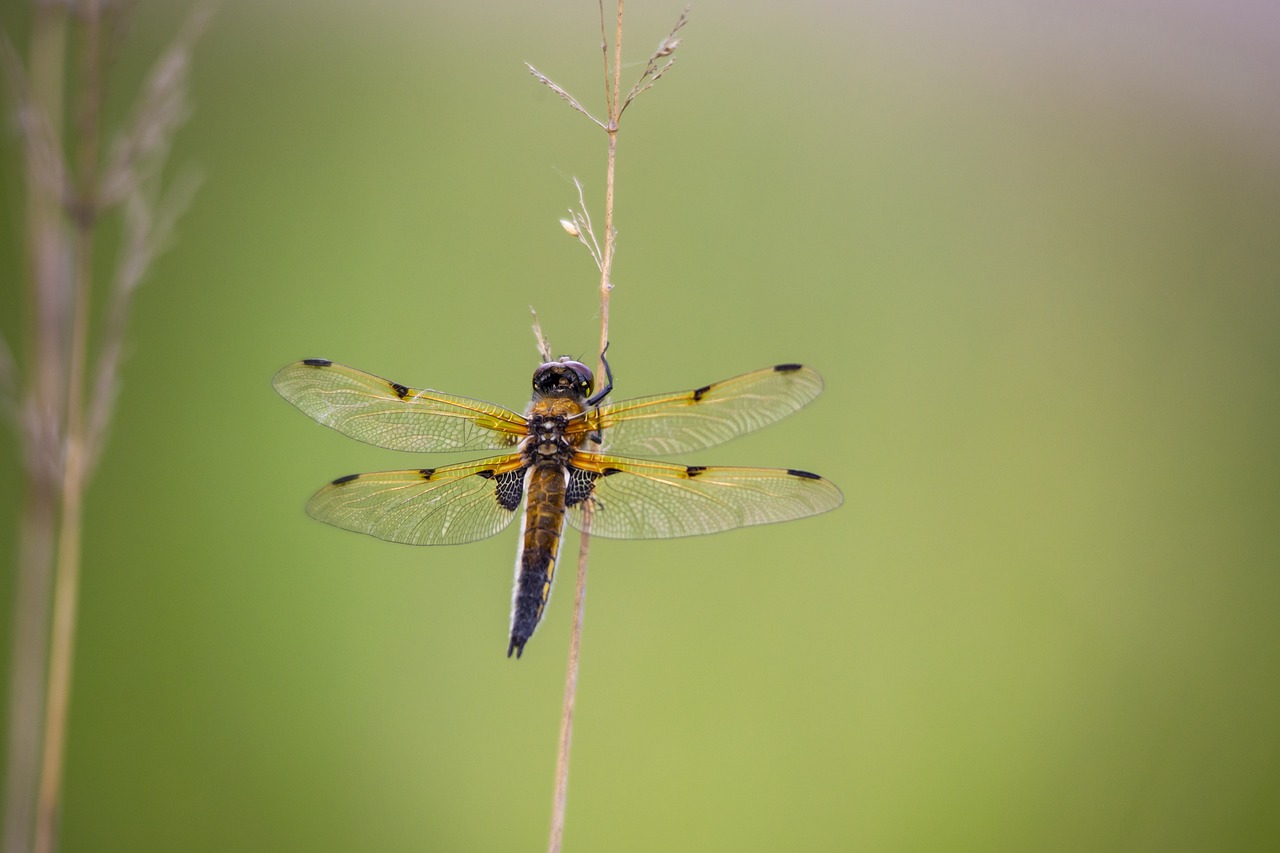The Four-spotted Chaser (Libellula quadrimaculata) is a captivating species of dragonfly belonging to the family Libellulidae. Here’s a detailed description:
- Appearance: The Four-spotted Chaser is a medium-sized dragonfly with a wingspan ranging from 70 to 80 millimeters. It has a robust body and broad, transparent wings. Adult males typically have a dark brown or black body with yellow spots along the sides and a distinctive black spot near the center of each wing. Females and immature individuals may exhibit a lighter brown coloration and lack the dark wing spots.
- Habitat: Four-spotted Chasers are commonly found in a variety of freshwater habitats, including ponds, lakes, marshes, and slow-moving rivers. They prefer areas with open water and emergent vegetation, where they can perch and hunt for prey.
- Range: This species is native to parts of Europe, including the British Isles, Scandinavia, Central Europe, and extending into Asia. It is widespread within its range and can be found in suitable habitats across different countries.
- Behavior: Four-spotted Chasers are strong fliers, often seen patrolling their territory or perching on vegetation near the water’s edge. They are skilled hunters, preying on small insects such as flies, mosquitoes, and other flying insects. Males are territorial and will defend their territory from intruding males.
- Reproduction: Like other dragonflies, the Four-spotted Chaser undergoes a complex life cycle that includes egg-laying in water, followed by larval development and emergence as adults. Mating typically occurs near water bodies, where females lay their eggs in submerged vegetation or directly in the water.
- Conservation: While the Four-spotted Chaser is not considered globally threatened, it may face localized threats due to habitat loss, pollution, and changes in land use. Conservation efforts aimed at preserving freshwater habitats and maintaining water quality can benefit not only the Four-spotted Chaser but also other aquatic species.
The Four-spotted Chaser is appreciated by enthusiasts and researchers for its robustness, behavior, and ecological importance as a predator in freshwater ecosystems. Understanding its habitat requirements and conservation needs is essential for ensuring its long-term survival.
Visited 839 times, 5 visit(s) today
Views: 1290
Subscribe to the newsletter:
